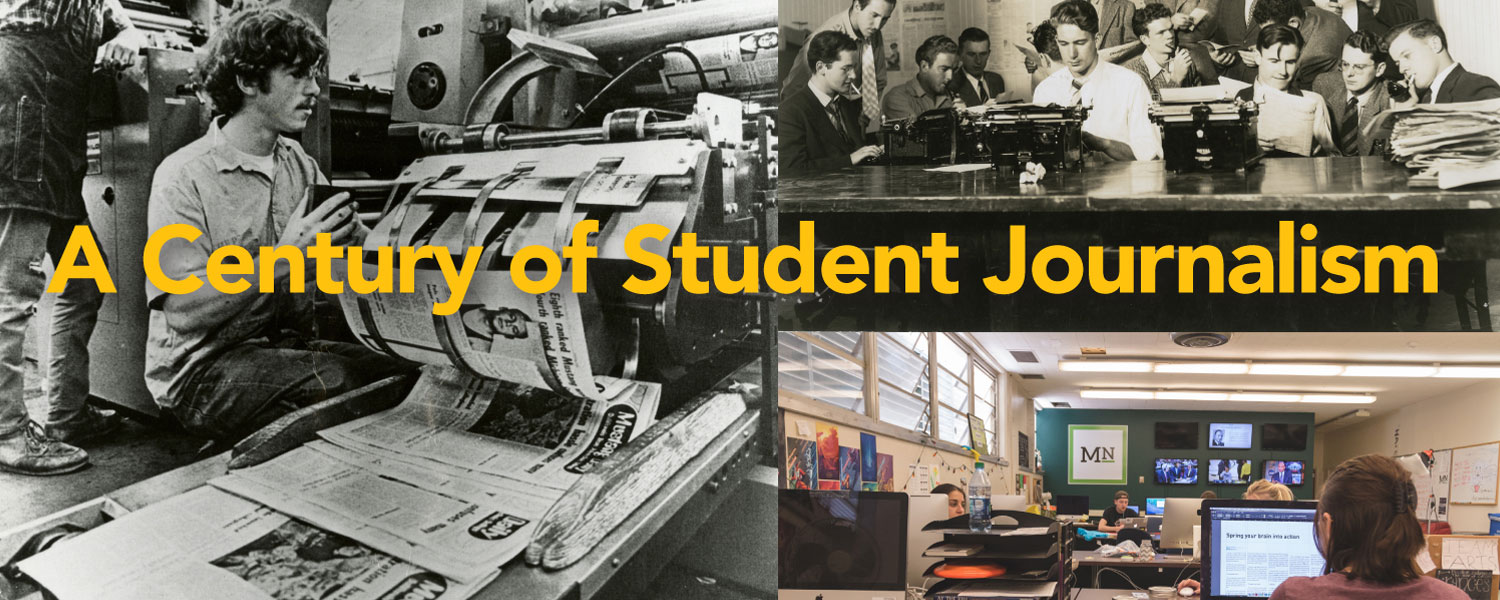By Jo Ann Lloyd
Cal Poly alumni are rising to transform the city’s skyline.
San Francisco’s striking skyline has been shaped over the decades by a cadre of Cal Poly alumni — architects, construction managers, civil, architectural and construction engineers — whose work is seen in such towering landmarks as the Transamerica Pyramid, the Bank of America World Headquarters and the Russ Building. Their work redefining the city’s image is far from over.
A handful of Cal Poly alumni are now leading the development of San Francisco’s new Salesforce Tower — which, at 1,070 feet and 61 stories, will be the tallest building in the city and the second tallest west of the Mississippi River. It will surpass San Francisco’s current tallest structure — the Transamerica Pyramid — by more than 200 feet.
Located in a formerly dilapidated section south of Market, Salesforce Tower’s base will connect with the five-level Transbay Transit Center, also under construction. The site is considered the centerpiece of the city’s transbay redevelopment plan that will house 11 Bay Area transit systems and include office, transportation, retail and residential uses, plus a 5.4-acre rooftop park.
Salesforce Tower is breaking boundaries and setting standards in
ways that will benefit tenants, city residents and visitors, as well as
professionals in the real estate and construction industries. And four
Cal Poly alumni are at the forefront of this groundbreaking effort.
Peter Back (Civil Engineering, ’88) is senior vice president of construction at Boston Properties, the real estate investment trust that is developing the property in partnership with the investment firm Hines. Boston Properties is one of the country’s largest owners, managers and developers of first-class office properties. Back oversees its Bay Area construction activities.
According to Back, the tower will be a new hub of the city. “Virtually all new construction in the city is taking place south of Market,” Back said. “Salesforce Tower is the future center of San Francisco, no doubt. I feel good about being in the center of the city.”
The other three alumni work for Hathaway Dinwiddie Construction, a 100-year-old company responsible for about one-third of San Francisco’s high rises. Of the company’s 330 employees, about 20 are Cal Poly graduates, including construction managers, architects, accountants and engineers of all types.
Pat Callahan (Construction Engineering, ’75) is senior vice president of operations. The company has three operating regions in the Santa Clara Valley, Los Angeles and San Francisco. The tower is not the largest project Callahan has been involved with in his 40 years with Hathaway Dinwiddie, but it’s close. “In terms of budget alone, Salesforce Tower is the company’s second largest project, just behind the Getty Center in Los Angeles. In today’s dollars, the Getty project would have cost well over a $1 billion,” Callahan said.
Callahan, who sits on Construction Management Department’s Industry Advisory Board, has stayed connected to the university since he graduated. In addition to his long involvement recruiting from Cal Poly, he and other members of the board raised the funds to build the Construction Innovation Center.
Hathaway Dinwiddie project manager Aaron Schlegel (Construction Management, ’08), is overseeing the subcontractors for Salesforce Tower’s mechanical, electrical, and plumbing systems, plus those installing the fire sprinklers and security system. He admits that while the construction methods might not be different for Salesforce Tower, the sheer size and scale of the project creates obstacles.
“Any time you build the tallest or the biggest anything in construction, there are new challenges,” he said.
One example is the pouring of the mat foundation. The size of Salesforce Tower necessitates an incredibly deep concrete and rebar foundation, running from 280 feet to 330 feet underground. The massive slab contains 5 million pounds of rebar and 14,000 cubic yards of concrete. It took more than 200 people working 17 continuous hours to pour 1,550 concrete truckloads involving five ready-mix plants and two back-up plants. It also took a great deal of scrupulous scheduling and organization.

The Salesforce Tower construction site, taken from the office of Peter Back
“Scheduling is a big hurdle on the project,” said John Rottman (Construction Engineering, ’79), a superintendent at Hathaway Dinwiddie. “We work around the clock — we have two 12-hour shifts working seven days a week. There is no time for error.”
Rottman is in charge of the tower’s systems, the massive concrete core, and the core’s steel frame exterior. Inside that core are the elevators, stairways, telephone rooms, mechanical systems and electrical rooms. The core in Salesforce Tower measures about 90 feet by 90 feet, with 4-foot thick walls in some places.
“It’s like a building within a building,” Rottman said. “The core protects vital systems from an attack. We used about 38,000 cubic yards of concrete just in the core.”
A major project of this scope is just one of many indications of a strong network of Cal Poly alumni serving the construction and real estate industry in the Bay Area. “I think that you would be hard pressed to find a current, major project in San Francisco that has not been impacted by at least one Cal Poly graduate, and many of the firms responsible for the design and construction of these projects were founded by or are now run by our graduates,” says Al Hauck, head of the Construction Management Department in Cal Poly’s College of Architecture and Environmental Design. “That is a pretty impressive impact on the skyline of the city.”
Peter Back at Boston Properties is proud to be a part of that network. “We stick together and support each other,” he said. He thinks it’s time for Cal Poly to get the recognition it deserves as a major player in the Bay Area construction and real estate industry. With Cal Poly grads at the helm of the San Francisco’s highest-profile project, that reputation — along with the city skyline — may be in for a change.






